 Today was a treat being out at the park surveying breeding birds during the week. The campground and trails were quite peaceful with few visitors. Once again I had Common Nighthawks active through mid morning. The highlight was finding a pair of Blue Grosbeaks building a nest near the Pedernales River and Twin Falls Creek. This male is a first year bird with only a blue head.
Today was a treat being out at the park surveying breeding birds during the week. The campground and trails were quite peaceful with few visitors. Once again I had Common Nighthawks active through mid morning. The highlight was finding a pair of Blue Grosbeaks building a nest near the Pedernales River and Twin Falls Creek. This male is a first year bird with only a blue head.I found the Rufous-crowned Sparrow for the second week in a row along Wolf Mountain Trail at the location pictured with my mountain bike. This sparrow has a beautiful song.
 The flowering Yucca is a Twisted leaf Yucca in bloom and visible along many roads in the Texas hill country.
The flowering Yucca is a Twisted leaf Yucca in bloom and visible along many roads in the Texas hill country.Today I opened each nest box to see what critters were occupying them. They almost all turned out to be in the Insect order, other than one Arachnid.
A wasp species was found in six nest boxes, three boxes were entirely empty, three had the Organ-Pipe Mud Dauber Wasp, and one had Cock Roaches. The Mud Dauber is docile. It paralyzes a spider, places it in a vertical mud cylinder, then lays an egg never to return to the nest.

The Acadian Flycatcher is still present at Tobacco Creek. There are four species of warbler nesting along the river at nest box sites, the Louisiana Waterthrush, Black & White Warbler, Northern Parula, and Golden-cheeked Warbler. Water levels in the Pedernales River continue to drop from lack of rain. I snapped this photo, a tranquil river scene from East Park Boundary.

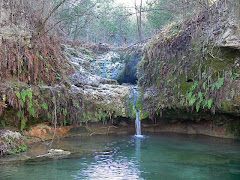
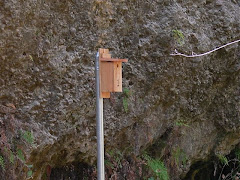
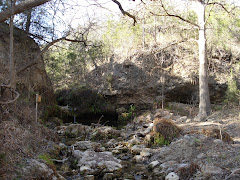
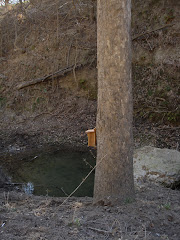
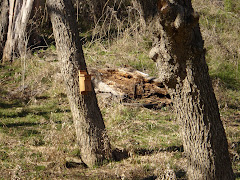




No comments:
Post a Comment